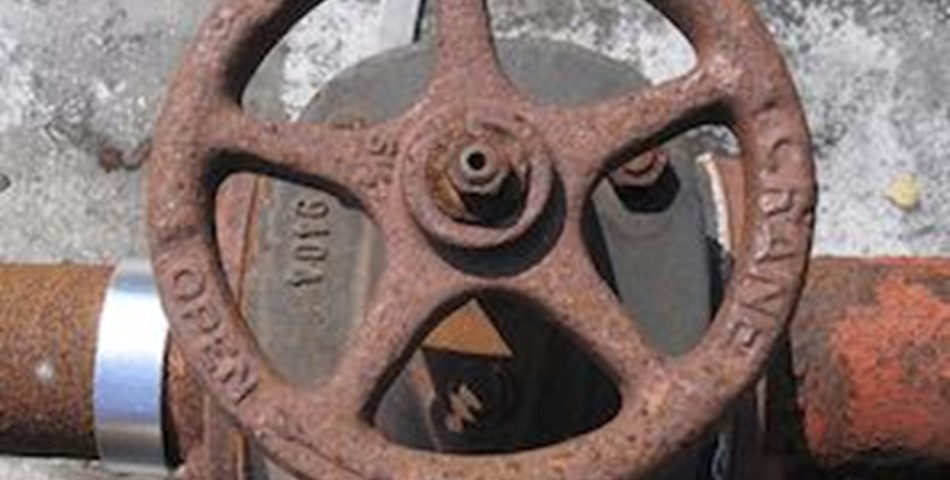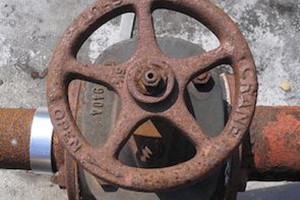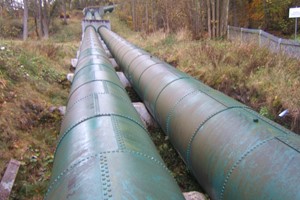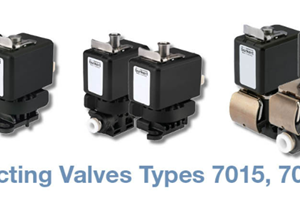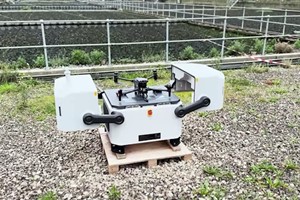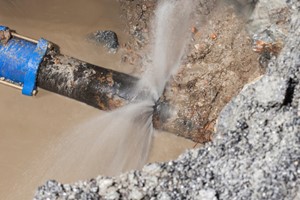Gate valves are general service valves primarily used for on/off, non-throttling service. Specifically, gate valves are used in applications requiring a straight-line flow of fluid with minimum restriction is desired. Gate valves operate when the user rotates the stem in a clockwise to close (CTC) motion or a clockwise to open (CTO) motion.
Gate valves may be used for several fluids. Generally, gate valves are applicable for potable water, wastewater, and neutral liquids; in temperatures between -20 and 70 degrees Celsius; maximum 5 meter/second flow velocity; and up to 16 bar differential pressure. Gate valves also are applicable for gases with temperatures between -20 and 60 degrees Celsius; maximum 20 meter/second flow velocity; and up to 16 bar differential pressure.
There are two types of gate valves: parallel and wedge-shaped. Parallel gate valves feature a flat gate between two parallel seats. Wedge-shaped gate valves are comprised of two inclined seats and an inclined gate that is just a bit mismatched.
1. Globe Valves
A linear motion valve, globe valves stop, start, and regulate flow. Globe valves initiate closure via a plug featuring a flat or convex bottom that is lowered onto a horizontal seat situated in the center of the valve. When a user opens the valve, the plug raises to allow fluid to flow. Globe valves are used for on/off and throttling applications because the disk of the valve can be removed from the flow path completely or it can completely close the flow path. While this type of flow control valve does produce slightly higher pressure drops than straight-through valves like gate, plug, and ball valves, they are applicable in situations where the pressure drop through the valve is not a controlling factor.
2. Pinch Valves
A cost-effective flow control valve, pinch valves are ideal for applications of slurries or liquids containing significant amounts of suspended solids. Pinch valves seal using one or more flexible elements like rubber tubes that become pinched to turn off the flow. These rubber sleeves are the valve’s only wetted part, and their flexibility allows pinch valves to close tightly around entrapped solids. Air or hydraulic pressure is placed directly on the elastomer sleeve to actuate pinch valves. A pinch valve’s body acts as a built-in actuator, which eliminates expensive hydraulic, pneumatic, or electric operators and results in the cost-effectiveness of this type of flow control valve.
3. Diaphragm Valves
Diaphragm valves are characterized by a flexible disc that contacts a seat at the top of the valve body and forms a seal. The diaphragm is flexible and pressure-responsive; it transmits force to open, close, or control a valve. While diaphragm valves are related to pinch valves, they use an elastomeric diaphragm rather than an elastomeric liner in the valve body. The elastomeric diaphragm is attached to a compressor and separates the flow stream from the closure element. Diaphragm valves are ideal for handling corrosive, erosive, and dirty services.
4. Needle Valves
Needle valves are volume control valves that restrict flow in small lines. Fluid moving through the valve turns 90 degrees and flows through an orifice that serves as the seat for a cone-shape-tipped rod. The orifice size changes when the user positions the cone in relation to the seat. Needle valves are similar to globe valves in that they share a few design features and have similar benefits; for example, both needle valves and globe valves empower operators to change flow rate using a threaded rotating stem. The difference between needle valves and globe valves is the precision that needle valves can achieve. In fact, needle valves are an ideal choice for calibration applications because they are capable of being fine-tuned.
Flow control valves are necessary components in a broad range of industries. Determining which flow control valve type is best for your particular situation depends on a host of criteria, but the most commonly used types include gate valves, globe valves, pinch valves, diaphragm valves, and needle valves.
Matt Krysiak



